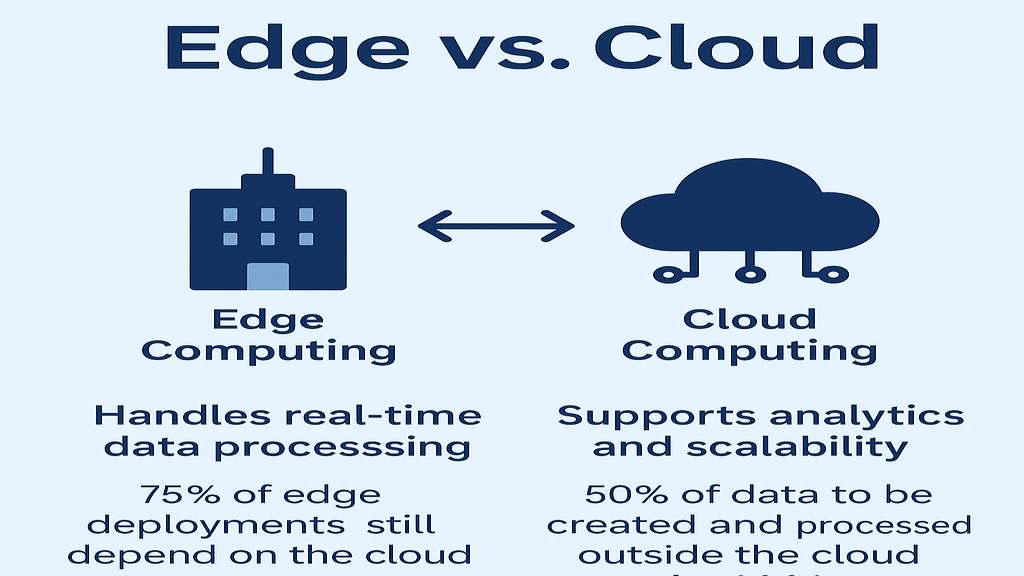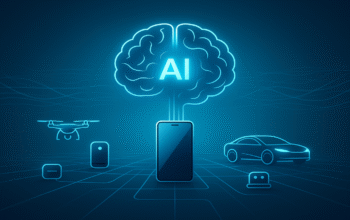Can Edge Computing Solve Web3’s Scalability Crisis?
Web3 is a breakthrough idea that combines blockchain, artificial intelligence, and a user-owned decentralized internet. However, when the area grows, scalability becomes a major obstacle. While centralized giants like Visa execute 24,000 transactions per second (TPS), Ethereum networks can only handle 15–30 TPS. This causes the system to get clogged, which results in lost energy, high prices, and delays. Presenting edge computing, a technological advance that might completely alter the way Web3 scales. Let’s get started and see how.
Covered Contents
ToggleThe Scalability Crisis in Web3: Why It Matters
Among the most important features of Web3, such as dApps, NFTs, and DAOs, is blockchain. Blockchains, when used excessively, create a range of serious issues:
-Slow speed: In contrast to Web2, Ethereum has only 30 transactions per second.
-Exorbitant charges: When the network has too many users, charges (like minting charges for NFTs) increase.
-High energy use: “Proof-of-Work” blockchains such as Bitcoin are energy-hungry.
Upgrades such as Ethereum’s transition to “Proof-of-Stake” have assisted, but these challenges haven’t yet been solved completely. Web3 must be quicker, less expensive, and consume less power than today’s internet while not sacrificing the security or freedom that decentralization brings.
What Is Edge Computing? A Quick Primer
Instead of relying on distant cloud servers, edge computing performs calculations and data analysis locally for users. Think of it as a “local warehouse” compared to the “centralized mega-factory” of the cloud.
Benefits include:
-Lower latency: Faster response times (critical for IoT and gaming).
-Bandwidth savings: Less data is moved to the cloud.
-Better privacy: Personal information stays local.
Edge technology is being utilized by Microsoft and AWS to name a few for autonomous vehicles and intelligent factories. But what does that have to do with Web3?
Edge Computing + Web3: The Perfect Pair?
By offloading workloads, edge computing solves Web3’s scalability problems:
1. Reducing Congestion on the Chain
Global consensus is not necessary for the majority of blockchain transactions. Only final outputs can be sent to the primary chain by edge nodes, which can perform specialized activities (such as a smart contract check for a local supply chain). This lessens the workload on the network.
For example: Edge nodes might be used by a decentralized ride-hailing system to instantly match drivers and passengers. Only payment settlements take place on-chain.
2. Cutting Down on Latency in Real-Time dApps
Instantaneous answers are necessary for IoT devices, games, and metaverse experiences. By placing processing power close to users, edge computing enables:
Real-time NFT interactions: Instantaneous bidding on a virtual concert ticket.
Smother DeFi trades: Faster execution of decentralized exchanges (DEX)
3. Making Network Participation More Democratic:
Energy and costly hardware are needed to operate a blockchain node. By serving as “light nodes,” edge devices (such as routers or smartphones) can increase participation and further decentralize networks.
Project Highlight: Helium Network: This decentralized wireless network is constructed using edge devices, or hotspots.
Using edge nodes, Dfinity’s Internet Computer can host dApps at web speed.
4. Greener Web3 Options
Networks lessen their dependency on power-hungry data centers by shifting work to energy-efficient edge devices. According to a study by STL Partners, edge computing might reduce carbon footprints by 60% by reducing data transmission to clouds.
Edge Computing in Action: Solving Web3’s Biggest Hurdles
Case 1: Decentralized AI & Machine Learning
Large amounts of computation are needed for AI models, such as those used for Web3 social platform content moderation. It is not feasible to train these on blockchains. Edge computing makes it possible to:
-Training of local models: Devices share only insights—not raw data—after processing data locally.
-Federated learning: Work together without centralized servers across edge nodes.
For instance, Ocean Protocol decentralizes AI data marketplaces while maintaining privacy by utilizing edge nodes.
Case 2: Smart Cities and IoT
The goal of Web3 is to enable people to own data from Internet of Things devices, such as smart thermostats. However, it is inefficient to send all of this data to blockchains. Edge computing makes it possible for:
-Processing data locally: Examine sensor data at the point of origin.
-Instant decision-making: Blockchain confirmations are not an option for self-driving automobiles.
For instance, IOTA’s blockchain and edge computing offers feeless microtransactions for IoT ecosystems.
Case 3: Networks for Content Delivery (CDNs)
Strong CDNs are essential for streaming high-fidelity metaverse material globally. AWS and other legacy CDNs are centralized. By encouraging users to contribute storage and bandwidth, edge-based decentralized CDNs like Filecoin or Theta Network improve scalability.
Challenges to Overcome
Even promising, the integration of Web3 and edge computing is not a cakewalk:
-Cost of Infrastructure: Hardware (5G towers, nodes) must be used to establish edge networks.
More points of entry for hackers create a security threat.
-Coordination Challenge: Ensuring smooth synchronization of blockchains with edge nodes.
These issues are being tackled by projects such as Flux (edge infrastructure) and Akash Network (decentralized cloud).
The Future: Where Do We Go From Here?
While it’s no silver bullet, edge computing is a key part of Web3’s scalability. Key trends to watch:
Edge-native blockchains: blockchains (such as the MXC Protocol) designed to run on edge devices.
5G growth: Edge functions will be augmented by quicker networks.
Regulatory clarity: Rules for data covering edge/Web3 hybrids need to be resolved by governments.
In conclusion, a scalable Web3 is Doable
Edge computing offers a workable, scalable path to Web3 by reducing environmental harm, speeding up dApps, and decentralizing co. Projects that integrate edge and blockchain show the concept is feasible, despite ongoing obstacles. The idea of a faster, user-controlled internet is becoming closer to reality as it develops.
The question is not if Web3 will profit from edge computing, but rather when the ecosystem will adopt it. The internet’s future is uncertain, that much is clear.



